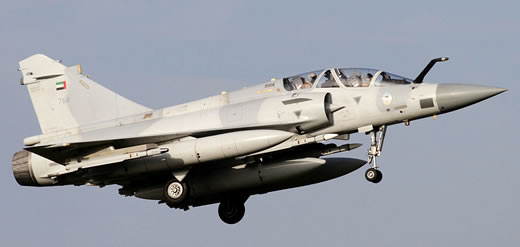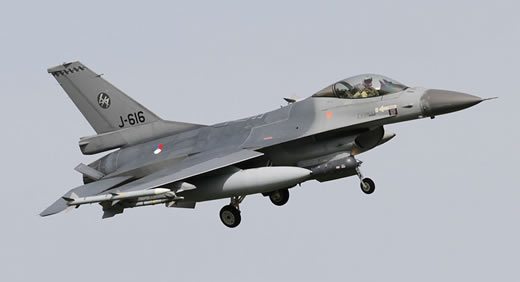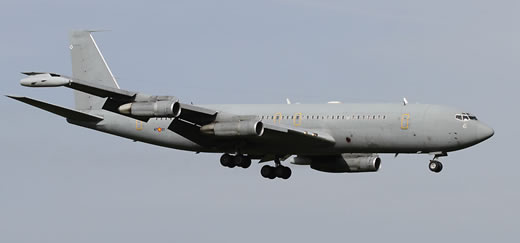U.S. Navy and Air Force units operating with Joint Task Force’ Odyssey Dawn’ fired at Libyan Navy and Coast Guards boats at the Bay of Misrata on Monday, Gaddafi’s loyalists were fighting rebels at the area. On Monday, U.S. Navy P-3C Orion maritime surveillance aircraft fired Maverick AGM-65F air-to-surface missiles at a Libyan patrol craft, after the 12-meter Libyan boat Vittoria was suspected of attacking merchant vessels in the port city of Misrata. An Air Force A-10 Thunderbolt II fired at two smaller craft, destroying one and forcing the crew to abandon the other vessel. The Navy said the strike was prompted by “confirmed reports that Vittoria and accompanying craft were firing indiscriminately at merchant vessels” near Misrata. The engagement was managed from the USS Barry DDG-52 Guided Missile Destroyer which handled maritime and air traffic control in the area.

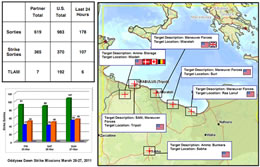
In an effort to decimate Moamar Gaddafi’s staying power, Coalition forces aimed launched their attacks yesterday on known ammunition storage sites near Tripoli. The Barry launched 22 Tomahawk cruise missiles at weapon-storage sites near the Libyan capital, believed to store surface-to-surface rockets and missiles. Coalition strike fighters have also struck at ammunition-storage depots and other military targets in western Libya. The attack came after the rebel’s advance westward crumbled as their advancing forces encountered effective military opposition by Gaddafi loyalist forces defending the ruler’s home town Sirte.

The notion that the rebels had ties to al-Qaida surfaced again Tuesday (March 29) as NATO Supreme Allied Commander Europe Adm. James G. Stavridis admitted in briefing at the U.S. Senate Armed Services Committee some “flickers” of intelligence indicated the presence of al-Qaida and Hezbollah members among the rebels. However, Stavridis said he didn’t have enough intelligence to say al-Qaida had a “significant” presence in the Libyan opposition.
The Pentagon said there were 119 strikes on Monday, up from 107 on Sunday and 88 on Saturday. Overall the U.S. have fired 214 Tomahawk missiles since March 19. The coalition carried out 1,802 sorties, at an average of 200 per day.

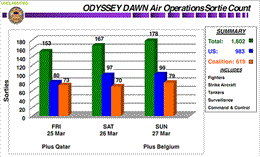
Enforcing a no-fly zone over Libya requires four sorties by NATO aircraft in the past 24 hours, four no-fly zone sorties were flown by Canada and Spain, using F-18 fighters. Other nations participating in this mission include France, U.K., Qatar, UAE and Denmark flying F-16s, Typhoon, Mirage 2000-5 and Rafale. Sweden could be joining the operation soon, with eight Gripen fighters.
The Swedish government is expected to approve the mission on Friday, following a formal request from NATO. Sweden is leading the ‘Nordic Battlegroup’ rapid reaction force, to which the F17 fighter squadron at Kallinge is assigned. Sweden has not sent its aircraft to a war zone in over 50 years, the last time Swedish air force fighters were involved in combat operations was in 1961 when nine J-29 Tunnan fighters operated under the U.N. peacekeeping force in Congo flown by volunteer pilots. This time, a detachment including eight Gripens, a C-130 transport plane, reconnaissance support, and 130 personnel including 10 pilots, command and control, operations, intelligence, technical support and security personnel. The Swedish detachment will operate from Sigonella in Sicily or Suda in Crete.

Sofar the U.S. military intervention in Libya has cost the United States “about $550 million” in extra spending, Cmdr. Kathleen Kesler, a Defense Department spokeswoman said yesterday, providing the first official estimate of the mission’s price tag. She added that future costs are expected to run about $40 million over the next three weeks as the U.S. military scales back its activity in the operation. Almost 60 percent of the total cost has been for munitions, the most expensive of which are Tomahawk missiles, which cost more than $1 million each.
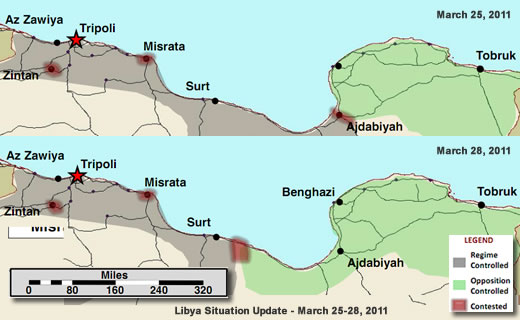
Coalition Air Forces Supporting the operation:

